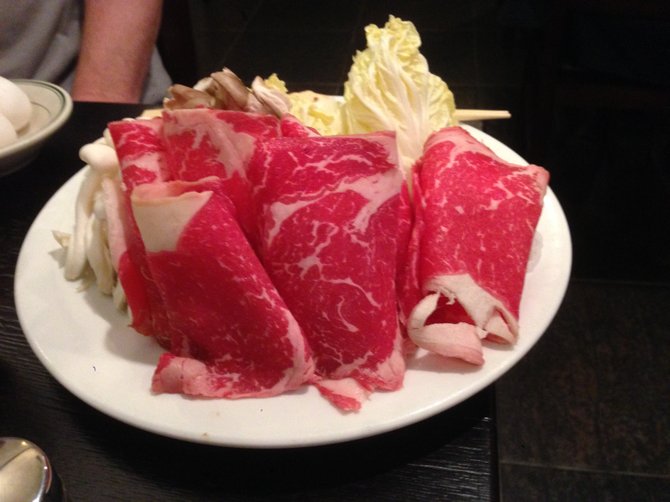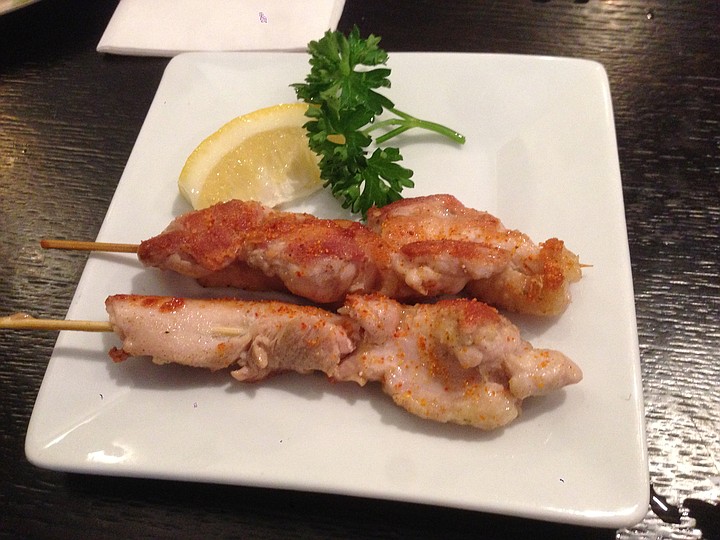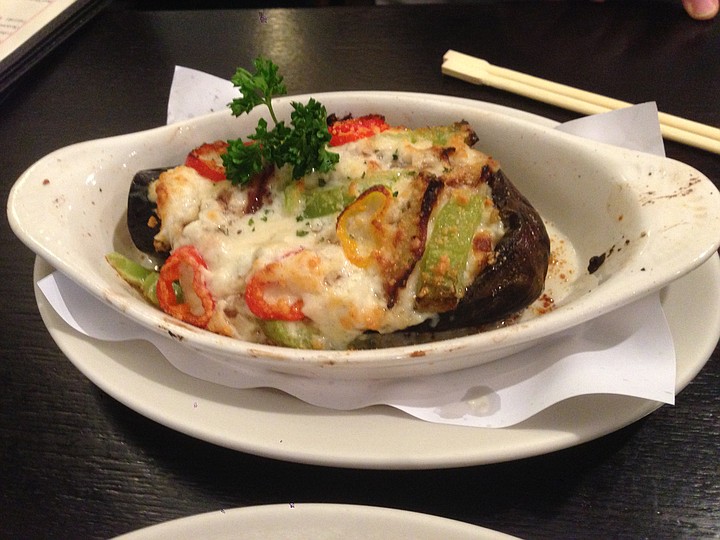 Facebook
Facebook
 X
X
 Instagram
Instagram
 TikTok
TikTok
 Youtube
Youtube

I love Japanese food, and I have eaten a lot of Japanese food. But if a recent visit to Izakaya Sakura proved anything, it's that I've developed a sort of Japanese comfort zone, and it's high time I stepped out of it.

When a friend described the place as the "most authentic" Japanese restaurant in town, I followed him to Kearny Mesa and rolled slowly down Convoy trying to find it. Good luck. While the address is clearly marked, you won't find a sign announcing this place. And yet somehow, all the Japanese expatriates seem to know exactly where it is.
We kept it simple to start — some salty chicken yakatori and sweet black cod. Both classic, both delicious. But with a menu of small plates, sushi, noodles and hot pots, we had plenty of exploring to do.
First, the eggplant gratin: an eggplant is roasted, the flesh scooped out, then mixed with diced vegetables and mild cheese, then put back into the husk to bake. I have never before even caught a whiff of cheese in a Japanese restaurant before, so this dish could not taste anything other than novel, and therefore captivating.

But we weren't done, and decided to go for the hot pot. Having enjoyed Chinese hot pot, I wasn't surprised when razor thin slices of uncooked beef, vegetables and eggs turned up at the table along with a steaming pot to cook them in. I was surprised, however, the Japanese version doesn't include broth. I was completely taken aback when the server recommended leaving the eggs raw.
Okay, so she didn't actually recommend it — technically she suggested our gaijin palates might prefer to crack the eggs into the hot pot to cook along with the rest of the ingredients. She just happened to mention that the authentic way — the Japanese way — involved dipping the cooked contents of the hot pot into a bowl of raw egg.

Naturally we had to try this, and though our stomachs might pay the price for it later, I couldn't be more glad we did.
I've never put too much thought into the flavor of an egg. The stuff's been so ubiquitous from an early age, and so consistent, that I pretty much know how each bite will taste before it makes it into my mouth.
Eating beef, cabbage and tofu dipped in raw egg forced me to notice how rich the yolk and albumen can be. This is a comfort flavor; it requires no salt or spice to please. Taken with the other ingredients, it proved complementary. After the first couple of bites, it became absolutely vital to the dish.
Excellent, though not for the faint of stomach, do yourself a favor. Save Izakaya Sakura for that moment you've fooled yourself into thinking that all the sushi, ramen and teppanyaki you've eaten in a lifetime has made Japanese food seem commonplace, almost pedestrian. Then prepare to be proven wrong in about fifty different ways.


I love Japanese food, and I have eaten a lot of Japanese food. But if a recent visit to Izakaya Sakura proved anything, it's that I've developed a sort of Japanese comfort zone, and it's high time I stepped out of it.

When a friend described the place as the "most authentic" Japanese restaurant in town, I followed him to Kearny Mesa and rolled slowly down Convoy trying to find it. Good luck. While the address is clearly marked, you won't find a sign announcing this place. And yet somehow, all the Japanese expatriates seem to know exactly where it is.
We kept it simple to start — some salty chicken yakatori and sweet black cod. Both classic, both delicious. But with a menu of small plates, sushi, noodles and hot pots, we had plenty of exploring to do.
First, the eggplant gratin: an eggplant is roasted, the flesh scooped out, then mixed with diced vegetables and mild cheese, then put back into the husk to bake. I have never before even caught a whiff of cheese in a Japanese restaurant before, so this dish could not taste anything other than novel, and therefore captivating.

But we weren't done, and decided to go for the hot pot. Having enjoyed Chinese hot pot, I wasn't surprised when razor thin slices of uncooked beef, vegetables and eggs turned up at the table along with a steaming pot to cook them in. I was surprised, however, the Japanese version doesn't include broth. I was completely taken aback when the server recommended leaving the eggs raw.
Okay, so she didn't actually recommend it — technically she suggested our gaijin palates might prefer to crack the eggs into the hot pot to cook along with the rest of the ingredients. She just happened to mention that the authentic way — the Japanese way — involved dipping the cooked contents of the hot pot into a bowl of raw egg.

Naturally we had to try this, and though our stomachs might pay the price for it later, I couldn't be more glad we did.
I've never put too much thought into the flavor of an egg. The stuff's been so ubiquitous from an early age, and so consistent, that I pretty much know how each bite will taste before it makes it into my mouth.
Eating beef, cabbage and tofu dipped in raw egg forced me to notice how rich the yolk and albumen can be. This is a comfort flavor; it requires no salt or spice to please. Taken with the other ingredients, it proved complementary. After the first couple of bites, it became absolutely vital to the dish.
Excellent, though not for the faint of stomach, do yourself a favor. Save Izakaya Sakura for that moment you've fooled yourself into thinking that all the sushi, ramen and teppanyaki you've eaten in a lifetime has made Japanese food seem commonplace, almost pedestrian. Then prepare to be proven wrong in about fifty different ways.
Comments